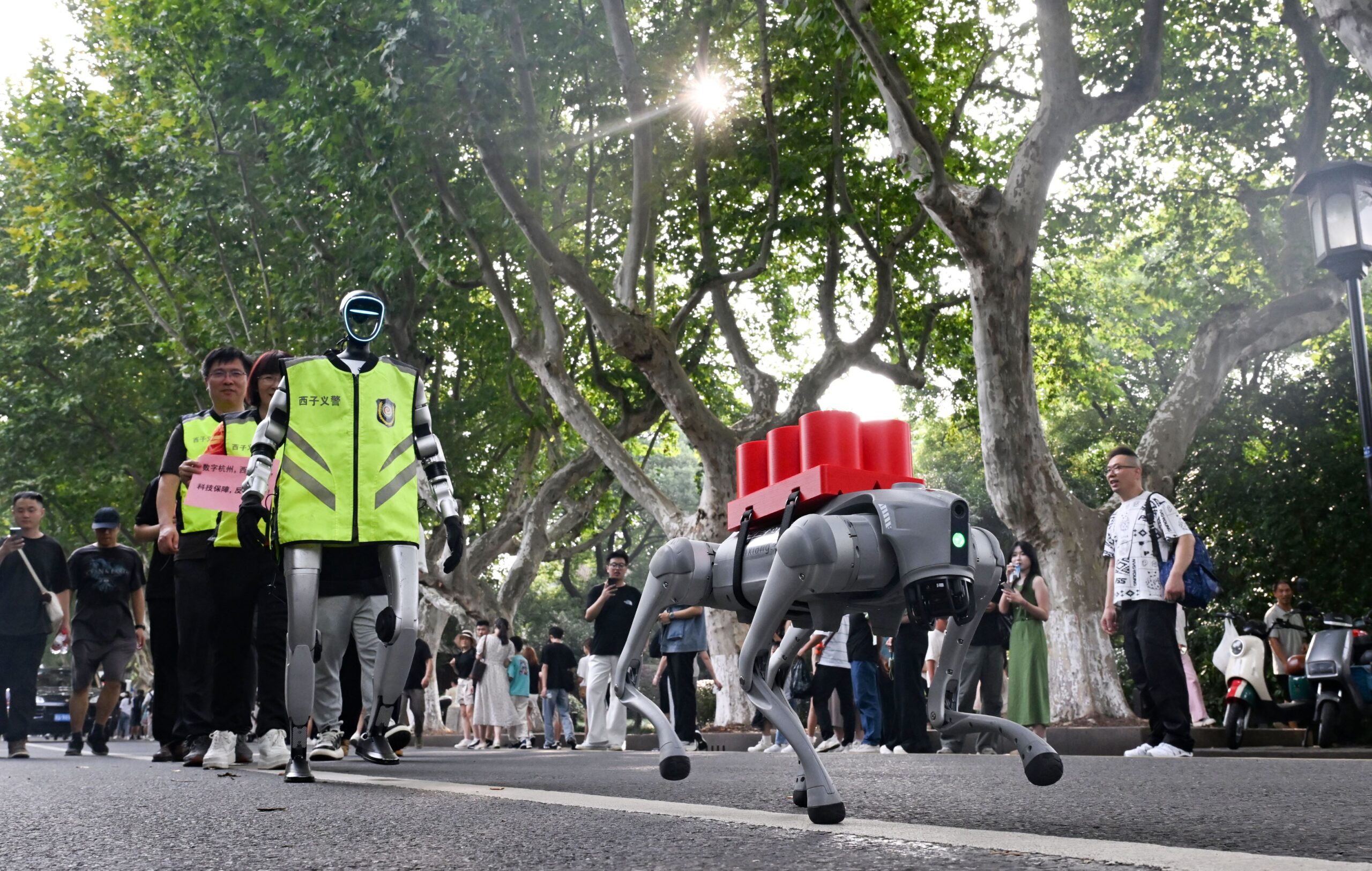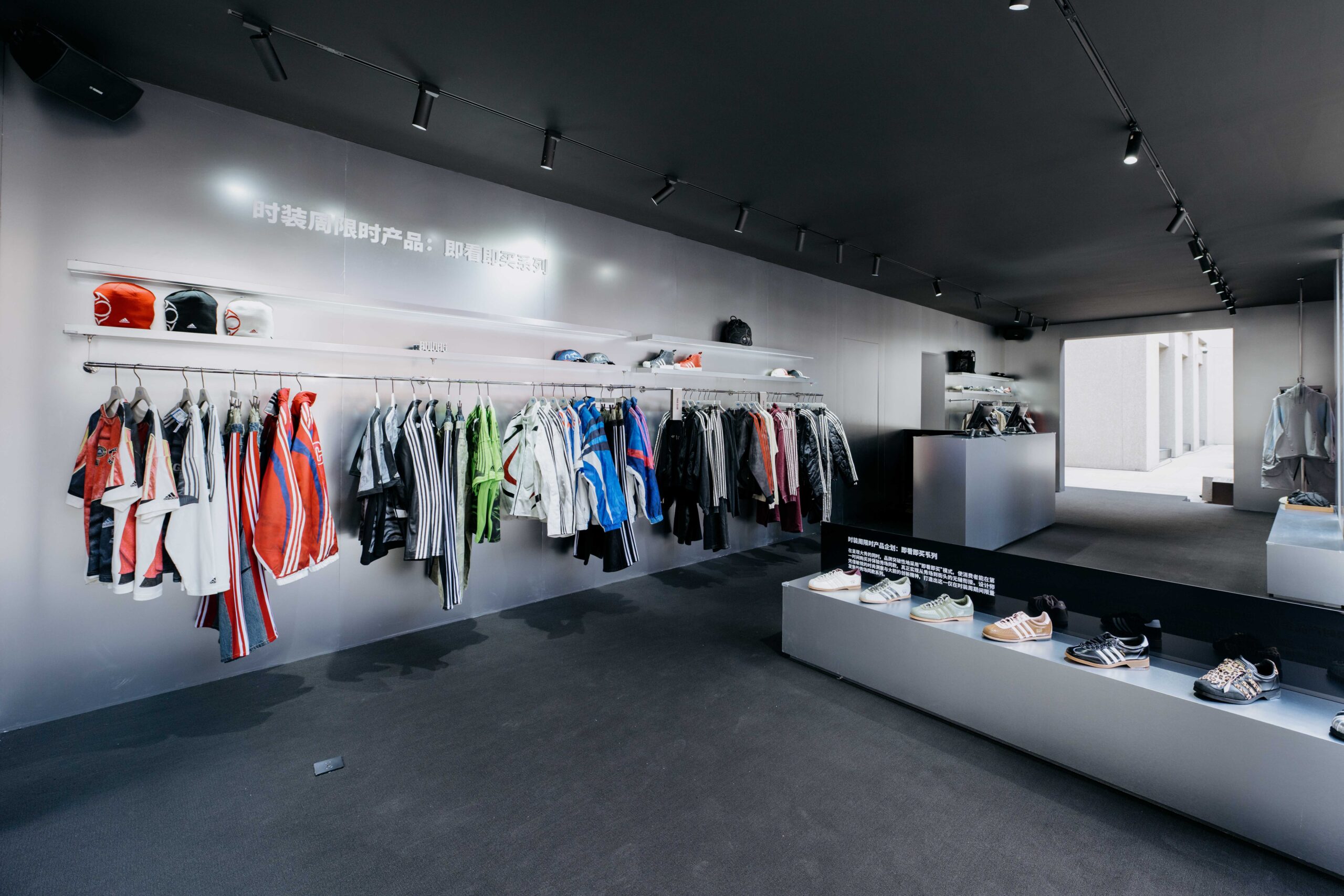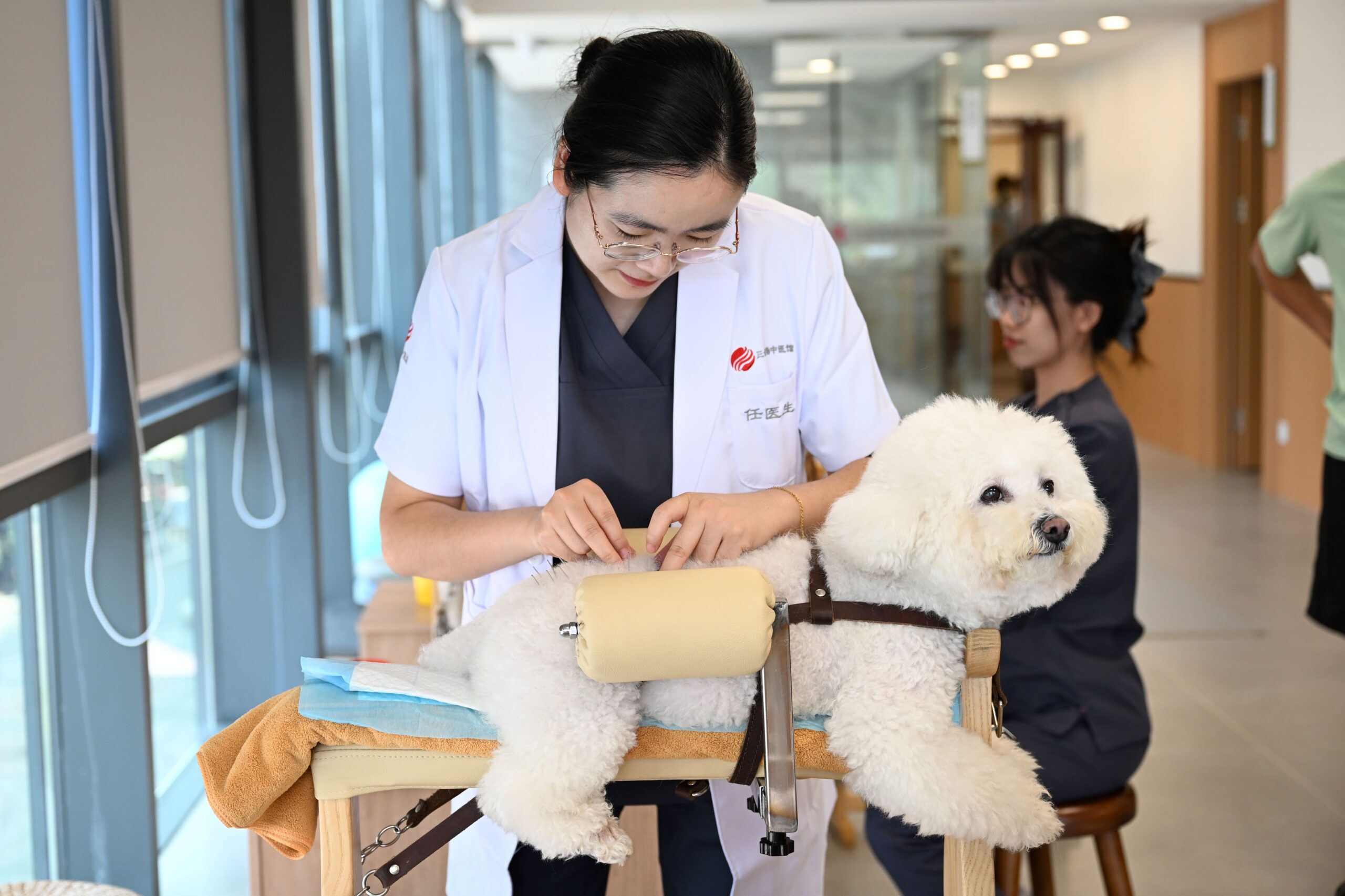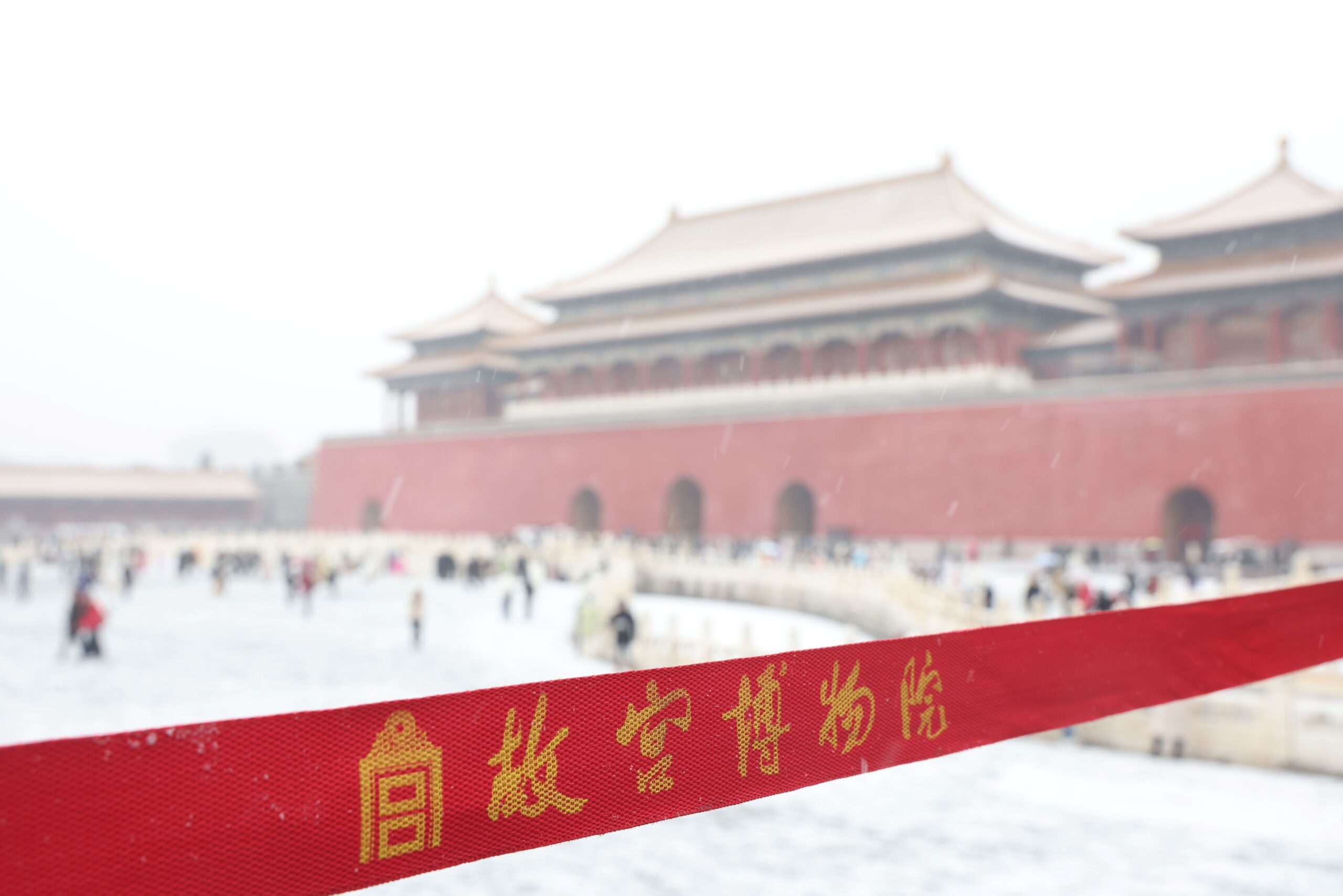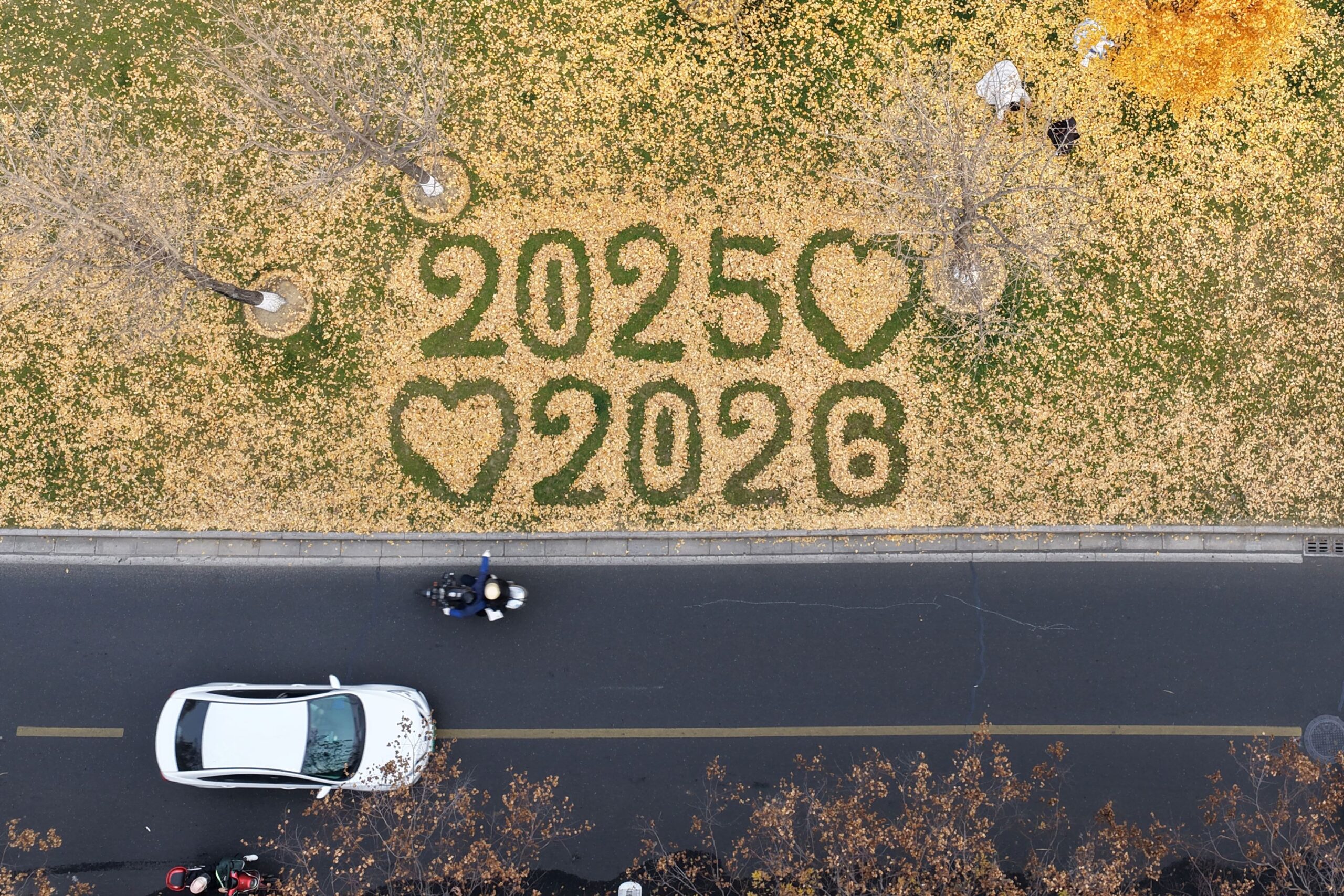From spinning handkerchiefs on national television to serving coffee and acting as interpreters at trade fairs, China’s humanoid robots have been busy expanding their repertoire. Their latest challenge? Lining up at the starting line of a half-marathon in Beijing.
At 7:30 on the morning of April 19, on a crisp Beijing day, the starting pistol cracked through the air. Alongside hundreds of runners, 20 humanoid robots set off on a half-marathon — marking a world first for humanoid athletes.
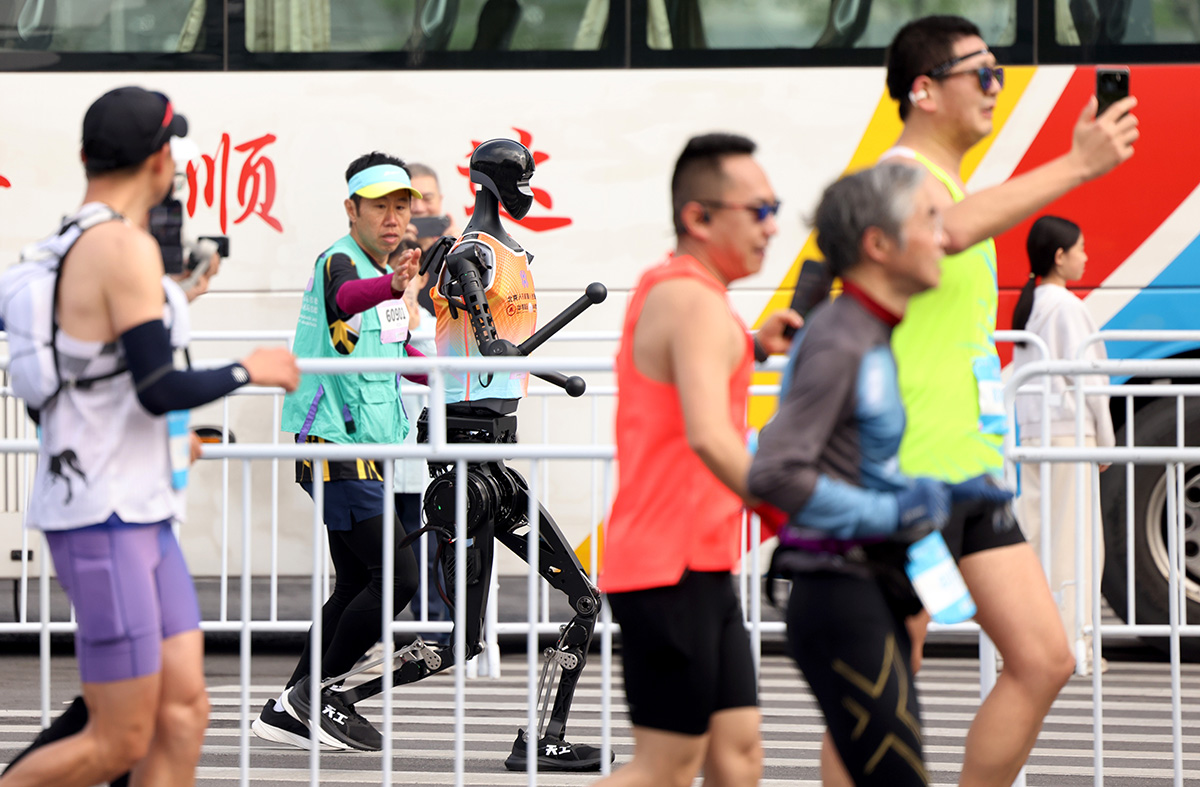
The 21.0975km course combined flat stretches with slopes reaching gradients of up to 9 degrees. A line of metal fencing separated humans and machines, but the rhythm of the race was hard to ignore. Some runners even adjusted their pace to match the steady, unflinching strides of their robotic companions.
Leading the mechanical pack was Tiangong Ultra, standing 1.8 metres tall and weighing 55 kilograms. Despite three mid-race battery swaps — the robot equivalent of a quick energy gel — Tiangong crossed the finish line in an impressive 2 hours and 40 minutes. However, this time was still more than double that of the human winner, who completed the race in 1 hour, 2 minutes and 36 seconds.
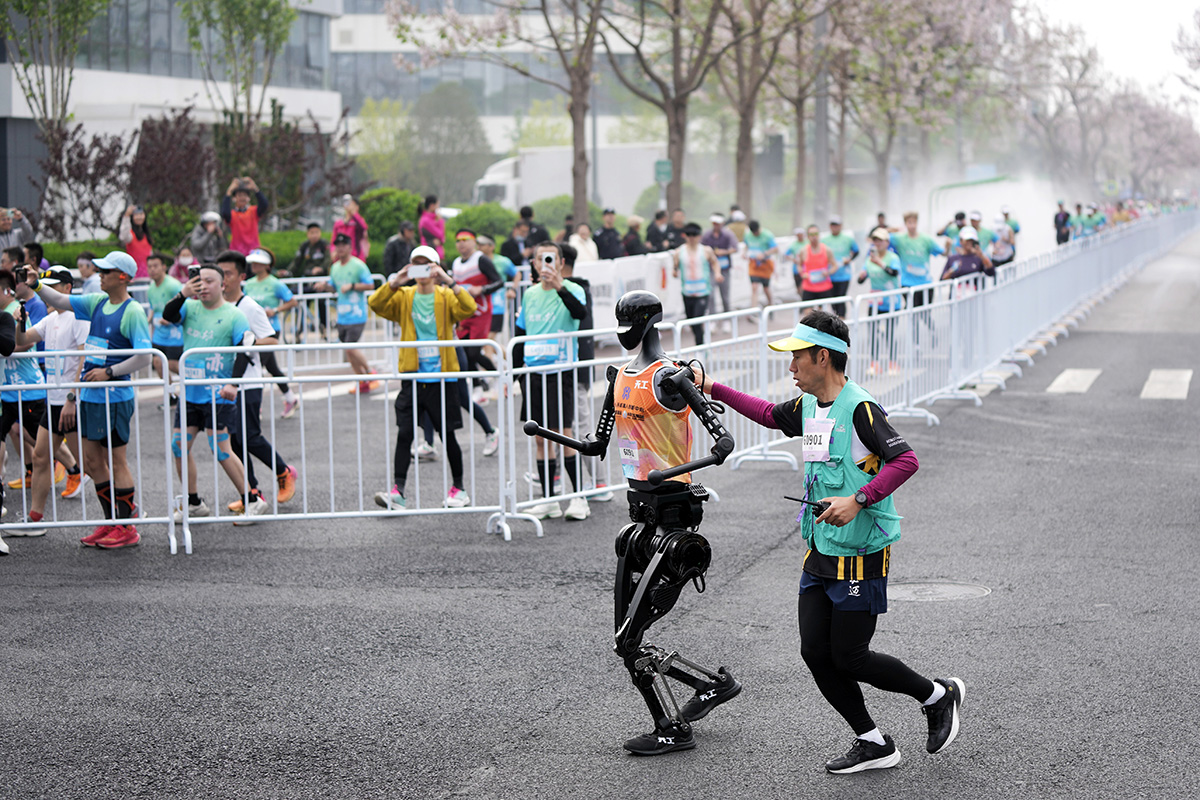
The 1.2-metre-tall N2 robot attracted the attention of a young boy watching from the sidelines as they paced alongside each other during the race. With clever footwork and remarkable balance, this plucky underdog claimed second place in the robot category.
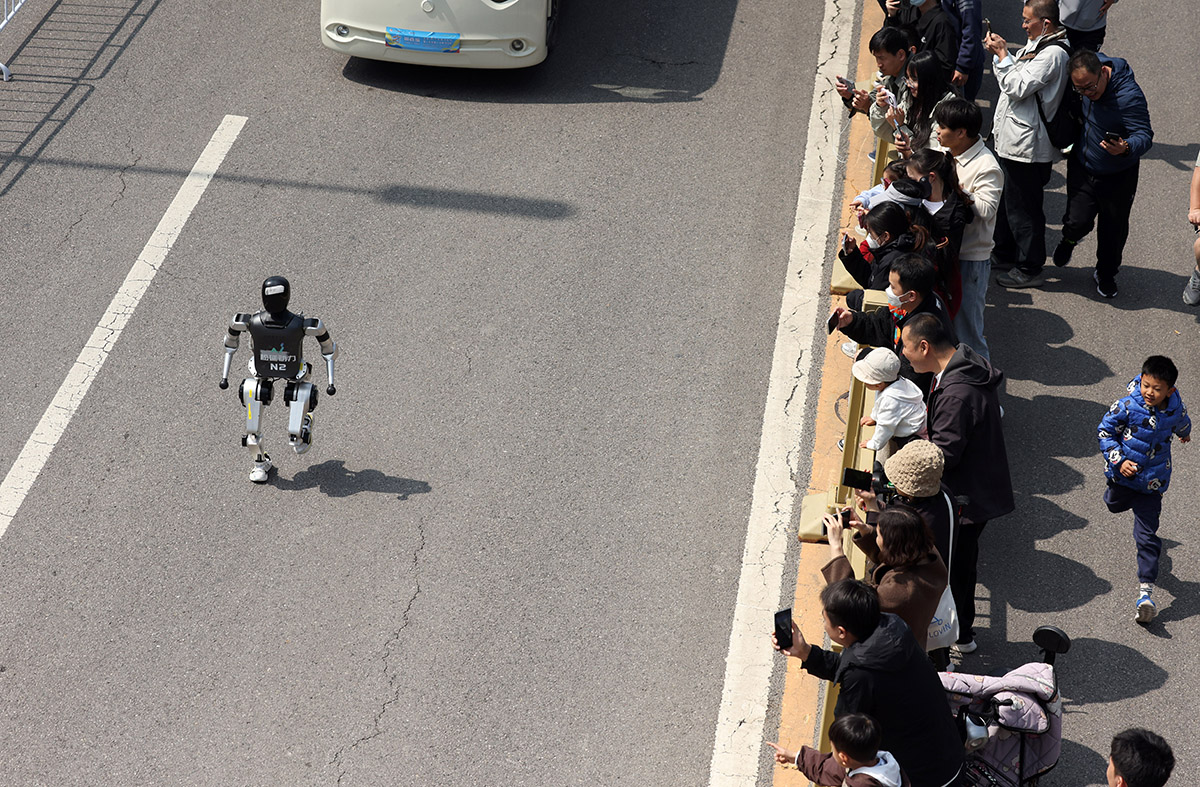
Little Giant, developed by local university students, was the shortest contestant, standing at just 75 centimetres tall. Despite its size, it managed a pace of around 2.25 kilometres per hour and featured voice control.
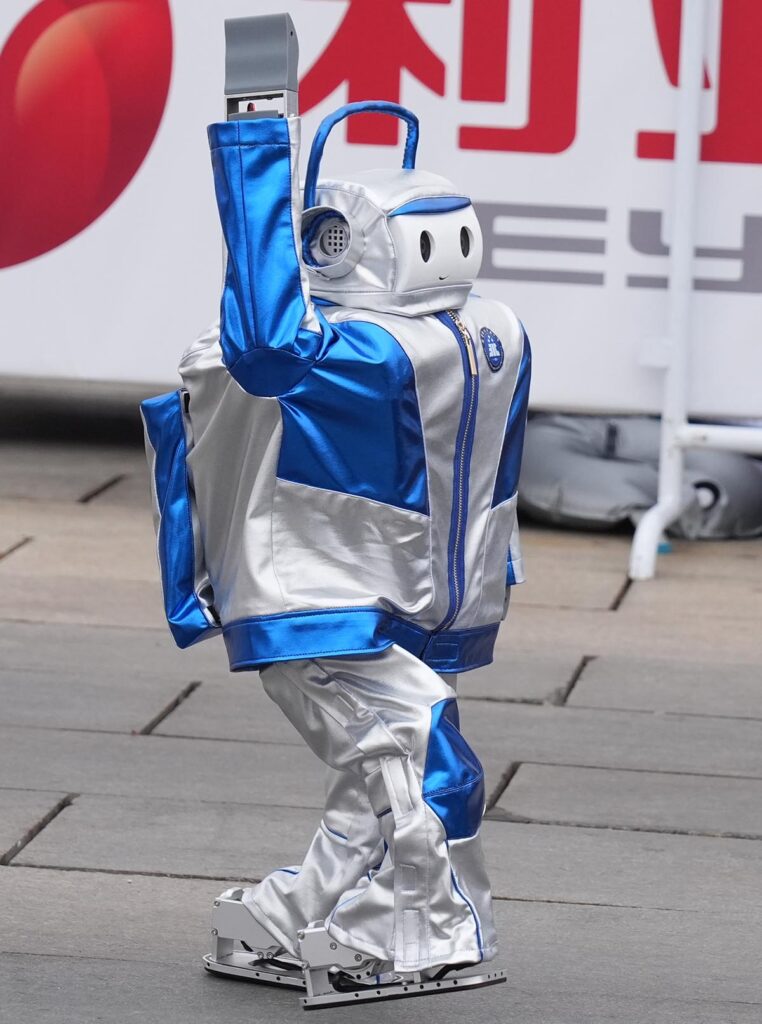
In pre-race testing, several of the competing robots wore running shoes. Like humans, robots also require shoes to protect their “feet” and joints. However, not every robot had such a smooth journey. Some hit the ground, but the drama didn’t end there.
One machine took an awkward tumble. It quickly popped back onto its feet and gave the crowd a cheerful wave before carrying on, as if nothing had happened. Another suffered a head-and-body separation mid-race. After a quick bit of trackside ‘reassembly’, it rejoined the course, as determined as ever.
One thing was clear as the finish line drew near: the future isn’t walking — it’s running. And it occasionally needs a new battery.
If you liked this article why not read Robotics Meets Runway: Unitree G1’s Catwalk Debut at SHFW



